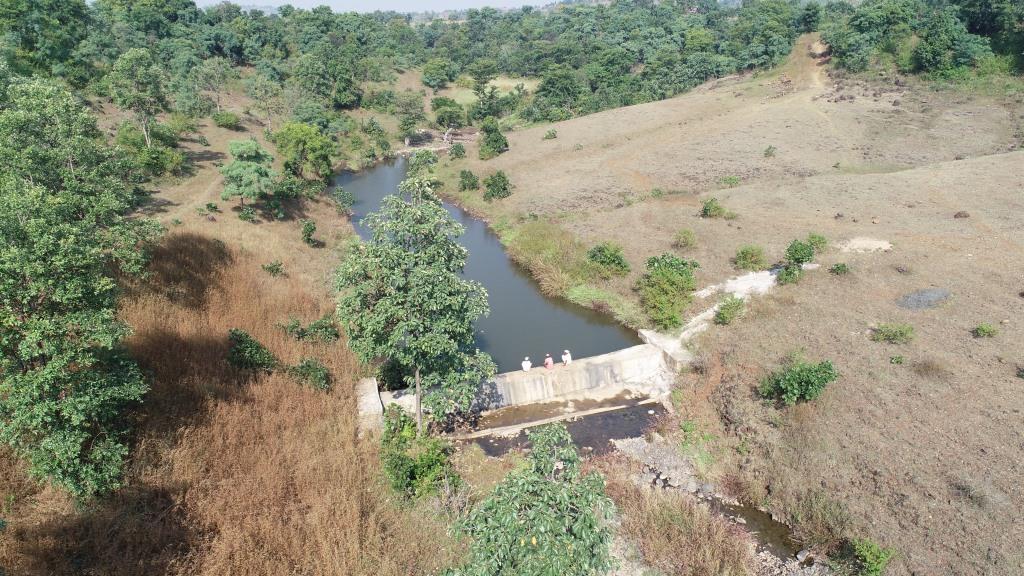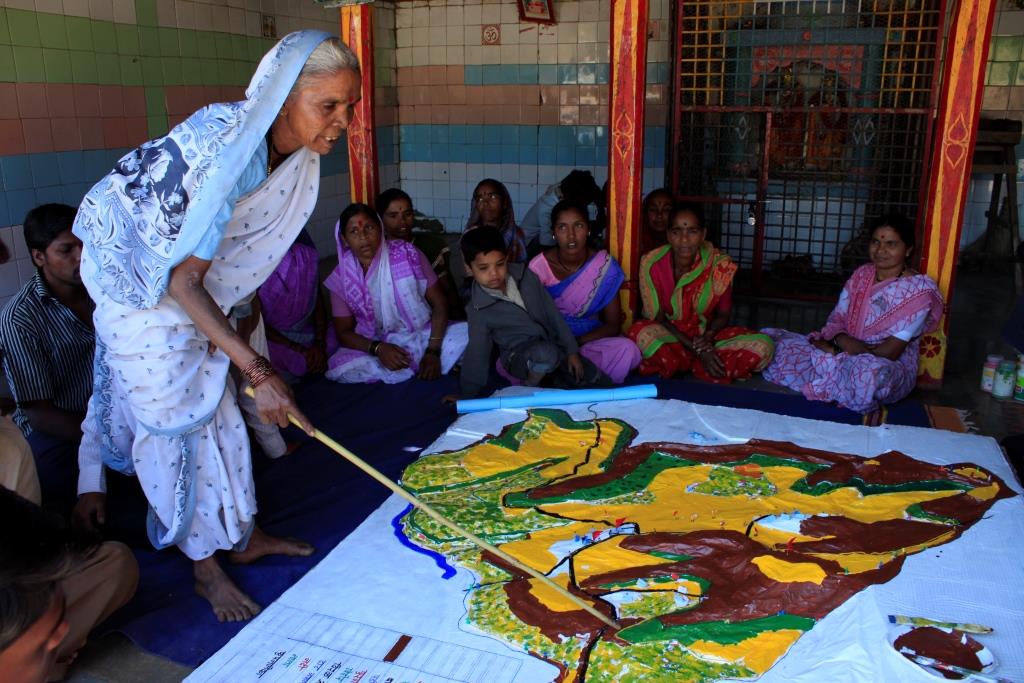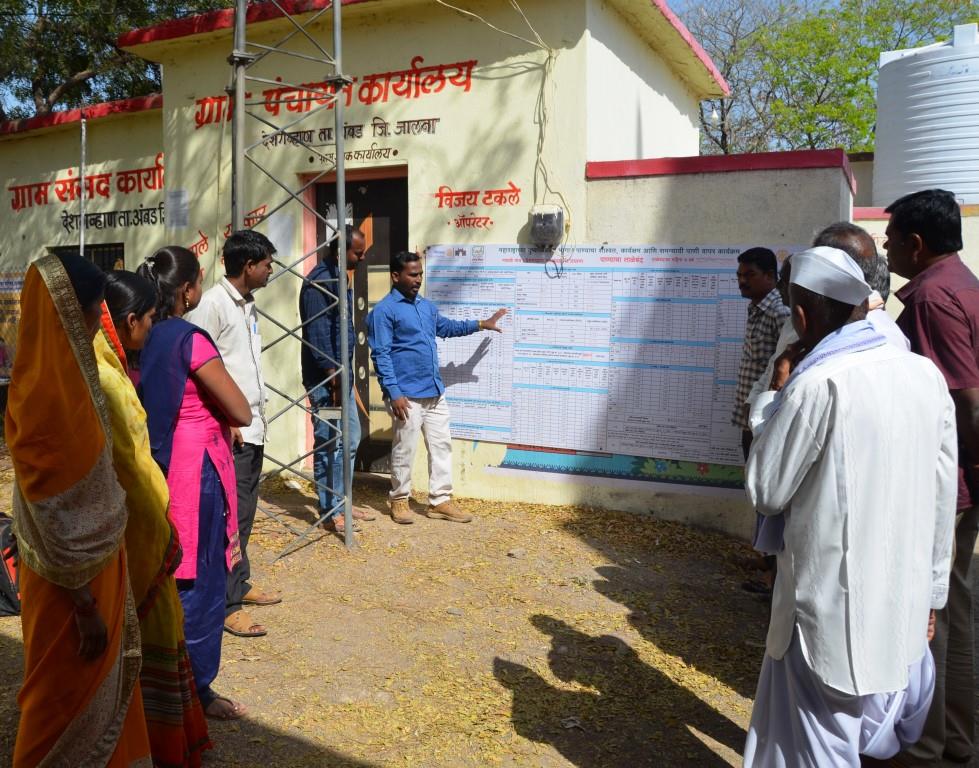India’s water resource situation is in stress. The solution to this problem is careful management and preservation of this priceless resource, and assurance of its economic viability, equitable distribution, and prudence in use. For more than 27 years, Watershed Organisation Trust (WOTR) has been working in this direction to create and put into place methods to safeguard and care for our water resources. The Water Stewardship Initiative (WSI), designed and implemented by WOTR, is now explained in a new publication titled “Water Stewardship in Rural India – A How to Manual.”
The Water Scenario in India
Human societies now face a myriad of difficulties in their relationship with water across the globe. The same is true for India. The most pressing issue is to meet the water demands of the country’s agriculture and livelihoods as well as a growing population. Due to changing rainfall patterns brought on by climate change, this situation has become even more challenging. These issues are only made worse by inadequate and ineffective supply and demand side management techniques in the country. Wasteful and unfair exploitation of vital water resources is the outcome of inadequate governance at all levels.
There are 600 million individuals in India who, according to a 2018 NITI Aayog assessment, experience severe water stress. That represents around 50% of India’s population. The demand supply mismatch is placed into perspective by the fact that India has 18% of the world’s population but just 4% of the global water resources.
India uses 250 billion cubic metres of groundwater annually, making it the greatest consumer in the world. This exceeds the combined consumption of the US and China, the next two biggest users of groundwater. Water tables have fallen alarmingly as a result. Simply put, we are rapidly running out of water.

Need for Evolving a Parity Mechanism
In many areas of water resource governance, there is a lack of an efficient system to control access and use of water. 90% of India’s water supply is used by agriculture, and farmers are encouraged to produce water-intensive, cash-intensive crops. 80% of water is used by just three crops: rice, wheat, and sugarcane. Rich landowners view water as a private good, assuming they have the right to take infinite amounts of water through private pipelines and borewells while ignoring the dependence of the less fortunate on the same aquifers, which leads to an increase in conflicts over water.
“Water users may not be seen merely as passive beneficiaries or opportunist actors. If they are sensitised and their capacities are developed, they can be good managers of water.”
Water as a common resource
Life-giving water plays a variety of roles in human civilization and is deeply ingrained in our social, economic, political, cultural, and spiritual fabric. Both a scarcity of water and a flood’s torrential downpour can cause extensive damage. It is a fundamental human right and need, a convenience, a social good, and a prerequisite for all commercial, industrial, and agricultural activity. Thus, water is essential to our continued existence on Earth. Water resources in a geography need to be managed in the public interest and should be shared by all households within the region.

When water is viewed as a shared resource held in a common trust by all households within a geography, its management becomes their combined duty. This careful management of water involves preserving this resource and ensuring its environmental sustainability, economic efficiency, equitable distribution and judicious use.
Understanding the Water Stewardship Initiative
Water stewardship views water users as effective water managers or stewards. It is defined as using water in a way that is economically advantageous, socially just and sustainable for the environment. The various water users who utilise water for drinking, sustaining their way of life, agriculture, and industry are regarded as significant stakeholders in the management of available water resources. It also emphasises that when water users are educated and given the tools necessary to succeed, they are not just perceived as passive beneficiaries or opportunistic actors.
“Water stewardship considers the different water users who utilise water for drinking, livelihoods, irrigation and industry as important stakeholders in the management of it.”
The Water Stewardship Initiative (WSI) focuses on the co-production of knowledge for institutional and behavioural change in order to improve community understanding and capacity to deal with a variety of weather conditions as well as address equity in access to water. It addresses water governance at the community level.
The stakeholders of the Water Stewardship Initiative
The primary stakeholders of the Water Stewardship Initiative (WSI) are the water users in a given community who depend on this resource for their daily needs, their means of subsistence, as well as for farming, fishing, and other rural industries and crafts. They also make sure that there is water accessible for the environment and ecosystem.
The residents of the nearby upstream and downstream villages are the secondary stakeholders since they influence and are affected by the water supply in a village at the cluster or watershed level.
The tertiary stakeholders are outsiders who exert influence on a village’s water resources through government initiatives, plans, funding, knowledge, and other means. Government representatives, donors, NGOs, water experts, and other decision-makers are among them. In the water stewardship approach, it is essential that these diverse stakeholders work in close coordination with one another for the sustainable management of this precious resource.

Water Stewardship Initiative to inspire and stimulate wider action
“The approach adopted to develop the ‘Water Stewardship Initiative’ was of co-production of knowledge for behavioural and institutional change towards building the communities knowledge and capacity to effectively face varying weather conditions,” says Prakash Keskar, Executive Director, WOTR in his introduction of ‘Water Stewardship in Rural India – A How to Manual.’
“Our findings and experiences from the pilot project, which began in 100 Maharashtra rain-dependent communities in October 2015, were released in March 2019. We are now in a better position, four years after the project’s completion, to present a reliable and scientifically sound technique that water management practitioners in the country’s groundwater-dependent, arid, and semi-arid regions may employ,” he adds.
The ‘Water Stewardship in Rural India – A How to Manual. has emerged from the hands-on experience of the initiative by Watershed Organisation Trust (WOTR). It is also aligned with the National Water Policy, the Groundwater laws like Maharashtra Groundwater Act-2009, Model Groundwater Bill at Centre, the PMKSY and the Atal Bhujal Yojana, which makes its application valuable.
The manual will inspire further and help wider action across the country as India needs many more water stewards to make water available sustainably and to all, while protecting our country’s ecosystems and we need to do it soon.
Download the Water Stewardship in Rural India – A How to Manual





